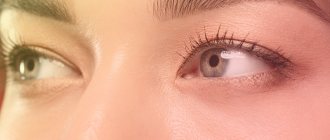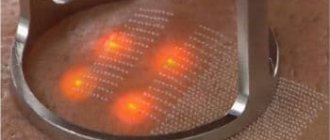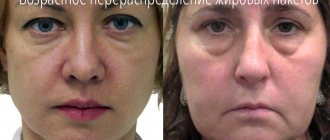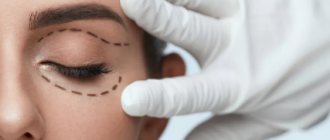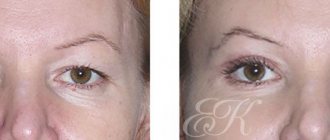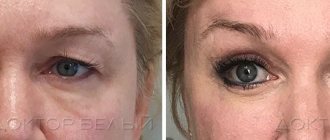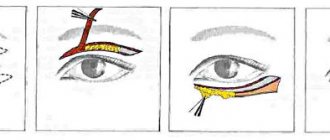Plastic surgery of the eyelids today is one of the most common plastic corrections. Their popularity is due to the fact that eye rejuvenation provides the most powerful anti-aging effect, allowing you to look ten years younger. A perky, young and expressive look attracts. Laser eyelid blepharoplasty helps maintain a fresh look at any age.
Types of laser blepharoplasty of eyelids
The types of this aesthetic procedure do not differ from the type of its implementation: laser or scalpel. The choice of a specific type depends on the problem with which the patient came. If the upper eyelid droops, the doctor will suggest upper blepharoplasty. During the operation, excess skin and fat will be removed from the periorbital area.
Bags under the eyes are an indication for lower plastic surgery. If it is necessary to correct both eyelids, you will be advised to undergo double blepharoplasty of the upper and lower eyelids. In some cases, the patient only needs to correct the corners of the eyes. Lifting the outer corner of the eye is called canthopexy.
The cost of laser resurfacing and laser peeling, based on the type
Laser resurfacing of face and body TOP CO2
| Full face (without eyelids) | RUB 22,550 |
| Full face (without eyelids), double zonal polishing on problem areas | RUB 25,300 |
| Face+eyelids | RUB 28,100 |
| Face+eyelids+neck | RUB 32,450 |
| Forehead | RUB 7,150 |
| Chin | RUB 6,900 |
| Neck (cervical-mental angle) (front) | RUB 9,570 |
| Face + neck (cervicomental angle) | RUB 28,600 |
| Upper eyelids | RUB 6,700 |
| Suture of the upper eyelids after blepharoplasty | RUB 3,700 |
| Lower eyelids | RUB 6,700 |
| Upper+lower eyelids | RUB 10,600 |
| Nose area | RUB 7,150 |
| Cheeks (both) | RUB 15,400 |
| Cheeks (both) double grinding in problem areas | RUB 17,490 |
| Neckline area | RUB 16,500 |
| Laser breast resurfacing | RUB 19,800 |
| Areolas (both) | RUB 6,050 |
| Laser resurfacing of seams after vertical breast lift | RUB 9,350 |
| Laser resurfacing of seams after anchored breast lift | RUB 11,550 |
| laser resurfacing of seams after abdominal lift (stomach) | RUB 15,950 |
| Hands | RUB 9,790 |
| Face+eyelids+neck+décolleté | RUB 39,600 |
| Back | RUB 42,100 |
| Shoulders | RUB 28,600 |
| Buttocks area | RUB 20,900 |
| Hip area (both) | RUB 28,600 |
| Side area | RUB 16,500 |
| Stomach | RUB 21,450 |
| Scar, scar beyond 1 cm (sq.) | RUB 1,650 |
| Scar, scar for 1 sq. cm (double grinding along the scar) | RUB 1,850 |
| Anesthesia (application) small zone | 500 rub |
| Anesthesia (application) large area | 1 thousand rubles |
Expand
Laser resurfacing L-Rubin face and body
| Full face (without eyelids) | RUB 19,800 |
| Full face (without eyelids), double zonal polishing on problem areas | RUB 21,100 |
| Face+eyelids | RUB 24,400 |
| Forehead | RUB 6,050 |
| Chin | RUB 5,900 |
| Neck (cervical-mental angle) (front) | RUB 9,350 |
| Face + neck (cervicomental angle) | RUB 27,700 |
| Face+eyelids+neck | RUB 31,900 |
| Upper eyelids | RUB 4,600 |
| Lower eyelids | RUB 4,600 |
| Upper+lower eyelids | RUB 8,250 |
| Nose area | RUB 6,050 |
| Cheeks (both) | RUB 13,200 |
| Cheeks (both) double grinding in problem areas | RUB 14,960 |
| Neckline area | RUB 15,850 |
| Areolas (both) | RUB 7,250 |
| Hands | RUB 8,050 |
| Face+eyelids+neck | RUB 30,360 |
| Face+eyelids+neck+décolleté | RUB 40,900 |
| Back | RUB 39,600 |
| Shoulders | RUB 27,750 |
| Buttocks area | RUB 19,800 |
| Hip area (both) | RUB 31,900 |
| Side area | RUB 19,800 |
| Stomach | RUB 19,500 |
| Scar, scar beyond 1 cm (sq.) | RUB 1,550 |
| Scar, scar for 1 cm (sq.) double grinding along the scar | RUB 1,700 |
| Anesthesia (application) small zone | 500 rub |
| Anesthesia (application) large area | 1,000 rub. |
Expand
Laser resurfacing of face and body Extra – Rubin
| Full face (without eyelids) | RUB 27,060 |
| Full face (without eyelids), double zonal polishing on problem areas | RUB 30,360 |
| Face+eyelids | RUR 33,750 |
| Face+eyelids+neck | RUB 38,950 |
| Forehead | RUB 8,580 |
| Chin | 8100 rub. |
| Neck (cervical-mental angle) (front) | RUB 11,500 |
| Face + neck (cervicomental angle) | RUR 34,320 |
| Upper eyelids | RUB 8,580 |
| Suture of the upper eyelids after blepharoplasty | RUB 4,600 |
| Lower eyelids | RUB 8,580 |
| Upper+lower eyelids | RUB 13,200 |
| Nose area | RUB 8,650 |
| Cheeks (both) | RUB 18,500 |
| Cheeks (both) double grinding in problem areas | RUB 20,150 |
| Neckline area | RUB 19,800 |
| Laser breast resurfacing | RUB 23,760 |
| Areolas (both) | RUB 7,260 |
| Laser resurfacing of seams after vertical breast lift | RUB 11,250 |
| Laser resurfacing of seams after anchored breast lift | RUB 13,850 |
| laser resurfacing of seams after abdominal lift (stomach) | RUB 19,150 |
| Hands | RUB 11,750 |
| Face+eyelids+neck+décolleté | RUB 47,500 |
| Back | RUB 51,450 |
| Shoulders | RUB 34,300 |
| Buttocks area | RUB 23,750 |
| Hip area (both) | RUB 34,300 |
| Side area | RUB 19,800 |
| Stomach | RUB 25,750 |
| Scar, scar beyond 1 cm (sq.) | RUB 1,980 |
| Scar, scar for 1 sq. cm (double grinding along the scar) | RUB 2,100 |
| Anesthesia (application) small zone | 500 rub |
| Anesthesia (application) large area | 1,000 rub. |
Expand
Laser peeling TOP CO2
| Face | RUB 13,200 |
| Face + eyelids | RUB 15,400 |
| Eyelids (top + bottom) | RUB 4,950 |
| Neck (cervical-mental angle) anterior part | RUB 8,250 |
| Cleavage | RUB 13,700 |
| Face+neck+décolleté | RUB 24,200 |
| Anesthesia (application) per zone | 1,000 rub. |
Laser peeling L-Rubin
| Face | RUB 11,500 |
| Face + eyelids | RUB 13,300 |
| Neck (cervical-mental angle) anterior part | RUB 7,150 |
| Cleavage | 11,000 rub. |
| Face+neck+décolleté | RUB 22,000 |
| Anesthesia (application) per zone | 1,000 rub. |
What to prefer: laser or scalpel?
The first visit to a plastic surgeon is always fear and doubt. Women frightened by horror stories often put off visiting a specialist until the last minute.
Among the most common fears is the fear of complications, scars and hematomas, and of course the operation itself. If you are one of those, then you should prefer laser surgery, since the laser, in addition to being a powerful and at the same time neat tool, has a number of advantages for both the doctor and the patient. How is a laser superior to a scalpel?
Minimum injuries
It allows you to achieve a significant reduction in the wound caused during surgery, while significantly reducing the required recovery period. The laser causes less trauma to surrounding tissue, and the incision made during laser surgery heals much faster.
No swelling or hematomas
The likelihood of hematomas and edema after laser surgery is several times less, since the laser beam, due to its high temperature, promotes cauterization of small vessels.
No scars
By choosing a laser, you do not have to worry about scars, since the wound heals without a scar, which is impossible to achieve even using the best scalpel.
No infections
The laser leaves no opportunity for infection to enter the blood, since the walls of the wound are reliably “sealed”.
No need to go to hospital
Laser surgery does not require hospital monitoring; within a few hours you can be at home and see a specialist only to monitor the recovery process.
Long lasting effect
The effect of laser surgery lasts forever: you will always look younger than your age!
Note! The patient can be operated on with carbon dioxide and erbium laser beams. A carbon dioxide laser beam is able to penetrate into the deep layers of the skin, cauterizing blood vessels, which allows you not to worry about the possibility of bleeding. However, this same property of the laser beam can cause complications, such as skin burns and pain in the patient.
The erbium beam allows the operation to be performed without burns, since it does not penetrate deep into the tissue. Laser eyelid blepharoplasty itself can be performed either surgically or without surgical intervention.
CHIRURGIE DES PAUPIÈRES\n\nDOCTEUR JEAN-LOUIS DURAND :\n8ème étage, du 74 av du Général de Gaulle, 72 000 Le Mans\nTÉLÉPHONE :\n02 43 76 96 00\n\nhttps://dr-jl-durand. com/chirurgie-esthetique/la-chirurgie-des-paupieres
Surgeries on the skin around the eyes
Currently, there are 5 types of plastic surgery on the skin around the eyes. The choice of one type of operation or another is justified both by the complexity of the problem and by the condition of the patient’s skin.
If the reason for contacting a specialist is an overhanging fold of the upper eyelid, then the specialist will offer you upper eyelid surgery, which involves cutting out excess skin and fat. Bags under the eyes, hernias and swelling are removed using laser surgery of the lower eyelids. In this case, the doctor can perform the operation in several ways:
- making an incision on the ciliary edge of the eyelid;
- making an incision on the inside of the eyelid;
- or by making a correction through the oral cavity.
The next type of surgery is circular blepharoplasty of the upper and lower eyelids. It is performed when the patient has problems with both eyelids; it is done in addition to a facelift for a more harmonious result. Using a laser, you can also correct the shape of your eyes. This type of operation is especially popular among patients with an oriental appearance. If the patient has impaired facial nerve function, the doctor will definitely recommend canthopexy - an operation that helps correct the shape and expression of the eyes.
Place of scar formation
After any cut in the epithelium, traces remain. Most operations involve suturing. And it is at the junction of damaged tissues that new scar tissue forms.
During blepharoplasty, plastic surgeons make incisions so that the scar is hidden in the natural folds of the eyes:
- With lower blepharoplasty, the cutting line runs close to the eyelashes.
- In upper blepharoplasty, the incision is made approximately 15 mm below the eyebrow and 9 mm above the lash line.
The scar after blepharoplasty looks like a thin white stripe. Thanks to modern techniques, it is so thin that it is difficult to notice with the naked eye.
With transconjunctival blepharoplasty, punctures are made on the inside of the eyelid. Self-absorbable threads are used for stitches. And sometimes they even leave the intervention site to heal on its own. This is due to the fact that the mucous membrane is restored very quickly.
With transconjunctival blepharoplasty, the sutures are not visible at all.
Medical indications
It happens that a patient comes for laser correction not of his own free will, but on the recommendation of other specialists. This happens when he needs to eliminate the overhang of the upper eyelid or correct the drooping lower eyelid. You will also be advised to meet with a plastic surgeon if you suffer from excess skin on your eyelids or “fatty hernias”. Deformation of the eyelids and facial asymmetry can also be an indication for surgery. It is important to understand that indications can be not only aesthetic, such as a tired or even angry appearance, but also indications can be medical, when an impending eye infection can threaten normal functioning!
Preparing for surgery
Plastic surgery today is rarely considered as a serious surgical intervention. However, laser blepharoplasty should be taken seriously. First of all, you need to find an experienced specialist who can perform surgery with minimal likelihood of complications. Poorly performed blepharoplasty, laser or not, can lead to irreparable consequences and sometimes not only aesthetic ones!
In addition, it is important to understand that such an operation also requires preparation, and after it a number of restrictions apply. Failure to follow the rules can have dire consequences, of which problems with appearance are the most easily remedied.
- Vision problems are a reason for preliminary consultation with an ophthalmologist.
- 2 weeks before the scheduled date of surgery, it is better to stop taking medications if possible. Some medications affect blood clotting and can cause complications during and after surgery.
- When planning the operation, keep in mind that for some time your face will be completely unpresentable. Bruising and swelling will disappear in a few days, but during these days it is better to stay at home.
- After surgery, you will not be able to wear your favorite lenses for up to 1 month. Make sure you have glasses.
- It’s also worth forgetting about the bathhouse and sauna for a month.
Compliance with simple rules is a guarantee of your safety.
Is it true that after blepharoplasty the eyelids look “lifeless” and the lower eyelid may sag?
It all depends on the skill and experience of the doctor. Our surgeon has performed many operations in recent years and this experience is the best guarantee that blepharoplasty will be performed with complete preservation of the normal condition of the eyelids.
Only excess skin is excised. The doctor will not cut off too large fragments of skin; there is no need to be afraid of this. Immediately after surgery, the appearance may actually be a bit scary - as there will most likely be some bruising and swelling. Because of the same swelling, at first it may seem that the eyelid is “tight” and is in an unnatural position. But these sensations pass as soon as the adaptation period ends and the swelling disappears.
How is the operation and recovery after it performed?
The operation itself in most cases takes place on an outpatient basis. General anesthesia is used only when additional interventions are necessary; more often, specialists use local anesthesia, so there is no need to worry about possible complications from anesthesia. The operation is carried out in stages and includes procedures to protect the eye using special lenses, anesthesia of the operation site, the operation itself and suturing the wound. The wound can be sutured using threads, special glue, or surgical tape.
The standard recovery period after surgery is 14 days. On the first day, do not forget about the need to apply cold compresses - this will help you avoid bruising and swelling. After a week, during a follow-up examination, the doctor will remove the stitches. After just 3 weeks you will notice that the scars from the wound have disappeared. You will be able to apply eye makeup only 10 days after the operation.
How is the procedure done?
Before laser resurfacing (fractional thermolysis), you must consult a specialist, since the procedure also has contraindications. Before the procedure, the cosmetologist applies an anesthetic gel to the skin, and then, after pain relief, treats problem areas of the skin with microflares. The Deka SmartXide laser is equipped with a special attachment that splits one beam into many small beams that form a grid. This way you can treat a larger area of skin without burns or damage. At the end of the procedure, the cosmetologist applies a drug with a calming and healing effect to the skin.
Results of laser eyelid blepharoplasty
By agreeing to measures such as surgery, you probably paint a picture of the expected result. The task of a good specialist is to explain what result can be realistically achieved in your specific case, and for what you will have to use other technologies.
Often, visiting patients do not realize that upper eyelid surgery does not involve raising the eyebrows or correcting facial wrinkles. Wrinkles will not go away; they can only be eliminated with a laser. The corners of the eyes will also not be affected.
What does the patient get? There will certainly be a rejuvenating effect, but even the most outstanding surgeon cannot completely reverse age-related changes. Your look will become refreshed, the bags under your eyes will disappear, your eyes will “open up”. If desired, you can achieve a more pronounced effect by resorting to a comprehensive solution, combining laser blepharoplasty of the eyelids and other procedures recommended by a specialist.
Contraindications and possible complications
Like any procedure, this one also has contraindications. Thus, a specialist will refuse to help a patient with increased sensitivity to the laser or with existing inflammation at the site of the planned operation. Laser eyelid blepharoplasty is not recommended for people:
- with problems in the functioning of the endocrine system;
- with increased intraocular pressure;
- having chronic diseases (during exacerbation);
- with HIV infections;
- having tumors of various degrees;
- with blood clotting disorders.
After surgery, your eyes may feel dry or have constant watery eyes. This complication is the result of improper functioning of the lacrimal glands; it goes away within a maximum of 2 weeks. During the operation, the integrity of the blood vessels is compromised, which often leads to swelling of the area around the eyes and hematomas. When contacting a low-qualified specialist, the patient may notice that after the operation he has asymmetry of the eyelids or his eyes will no longer close completely. When choosing a carbon dioxide laser, patients rarely experience burns. There may also be burns from surgical blades during surgery; this is a rare but possible complication that a specialist will definitely warn you about.
Reviews after the procedure
After blepharoplasty, laser eyelid resurfacing may be recommended as an additional beauty procedure. Reviews about the procedure are almost always positive, because it is a safe and low-traumatic method of removing scars. There is a certain percentage of patients who develop complications after the procedure, or the recovery period does not go well. But these are individual skin characteristics that cannot be predicted. The main thing in laser resurfacing after blepharoplasty is to choose an experienced cosmetologist who works with high-quality equipment.
One method or an integrated approach?
Arguing about the dangers and benefits of choosing one or another instrument for performing an operation, some doctors lose sight of the fact that the most successful option is a combination of the traditional method and a laser. This combination involves removing excess skin and fat using a scalpel, followed by laser rejuvenation procedures. The laser will rejuvenate the skin, smooth out wrinkles, and the patient does not have to worry about possible burns during surgery.
The laser is used separately from the scalpel, or in combination with transconjunctival plastic surgery, which allows to avoid scars on the outer side of the eyelid. A comprehensive solution always gives greater effect with a reduced risk of unwanted effects. An integrated approach stimulates the production of elastin and collagen, patients note an increase in skin elasticity.
Non-surgical methods
The desire to correct skin defects in the eye area is not at all a direct path to the surgeon’s scalpel/laser. There are also non-surgical methods for eliminating defects that are available to those whose skin is not yet in a completely deplorable state. Small wrinkles, changes in the color of the skin of the eyelids, and the appearance of slight swelling can be corrected by the fractional thermolysis procedure. Resorting to non-invasive techniques is only possible for younger patients.
The procedure uses an erbium laser, which does not cause skin burns. Using a laser, a specialist removes the top layer of skin, thereby activating the regeneration process. The procedure is absolutely safe and does not require long recovery. The only thing that you will be asked to avoid direct sunlight for 14 days. The effect of the procedure usually lasts 2 – 3 years. Another option for eliminating skin defects around the eyes without surgery is laser resurfacing. Here a carbon dioxide laser is used, with which the doctor evaporates the top layer of skin. The method allows you to achieve a more lasting effect in 5 sessions than with fractional thermolysis.
What is laser eyelid resurfacing?
Laser skin resurfacing (selective or fractional photothermolysis) is a method of targeted point exposure to a beam of light on various layers of the epidermis. The advantage of this method is that it works with layers of the epidermis located at different depths, right down to the basal layer, with virtually no damage to the upper layer.
Due to the specific radiation spectrum, the light beam affects only certain components of the skin - chromophores:
- water in the cells;
- hemoglobin found in blood vessels;
- melatonin pigment.
Only these components of the epidermis are exposed to laser radiation, each of them has its own spectrum of susceptibility. Thanks to the different spectra, the cosmetologist can accurately set the range of radiation and the wavelength of light, which will remove scars on the eyelids without damaging the structure of the delicate skin.
Laser eyelid resurfacing after blepharoplasty is completely optional. Most patients successfully complete the postoperative period, and the incision sites after eyelid surgery are not visible. But to bring your eyes to perfection, it is still recommended to undergo a course of laser resurfacing procedures. If good quality blepharoplasty has been performed, laser resurfacing of the eyelid skin will help launch the eyelid’s own regeneration processes. After 2-3 procedures, even small wrinkles that cannot be removed surgically will disappear.
Laser eyelid blepharoplasty reviews
“Lauri Good afternoon, I have found my wonderful surgeon who knows how to do high-quality plastic surgery. His name is Dr. Durand, by the age of 50, wrinkles began to appear, especially facial wrinkles, I saw that I no longer worried my husband. I decided to have the operation, now I look 10 years younger, and my husband can’t take his eyes off me.”
“My doctor enthusiastically advised me to use Jean Louis Durand for mole removal, I really liked the result and later I returned to have a lifting done in conjunction with blepharoplasty. He is very kind and good, I felt free with him and shared my fears before the operation and asked many questions. I went into the operation absolutely calm. Very serious post-operative care. I am very pleased with the result, the price is very reasonable for such a result and service. THANK YOU SO MUCH DOCTOR!”
You can learn about all the new products and advanced developments of French scientists in the field of plastic surgery in the section plastic surgery and cosmetology in France.
